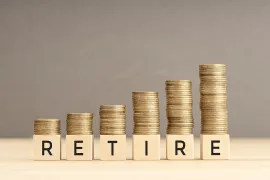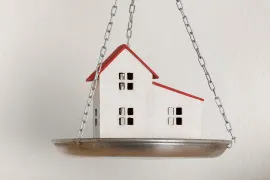This Manitoba couple can retire at 50, but will have to solve the problem of a few lean years
Expert says part-time work, or a loan that could be repaid out of excess income later in retirement could bridge the gap

Expert says part-time work, or a loan that could be repaid out of excess income later in retirement could bridge the gap
A couple we’ll call Larry, 45, and Sylvia 42, live in Manitoba. Both are civil servants. Their annual incomes are $132,000 and $75,000 before tax, respectively. After tax and benefits deductions, they bring home $9,600 per month from their jobs. They have two children we’ll call Rolf, 16, and Kai, 13. They want to be sure they can afford to quit work when Larry is 50, even before their defined-benefit pensions begin to flow.
Their philosophy of investing is weighted toward property. They have a $550,000 house and four rentals worth a combined total of $900,000, RRSPs with a total value of $145,000, $30,000 in TFSAs and $155,000 of non-registered investments. Their assets are backed by mortgages of $200,000 on their house, $489,953 on the rentals, $100,000 margin on their taxable investments and a $25,000 car loan. Net worth works out to $1,020,047. Their issue: What will their retirement income be if they quit when Larry is 50?
Present finances
Family Finance asked Derek Moran, head of Smarter Financial Planning Ltd. in Kelowna, B.C., to work with Larry and Sylvia. His view: retirement at Larry’s age 50 should work.Currently, their after-tax annual salaries total $116,000, rents $31,778 and dividends $6,357 for total post-tax income of $154,135 per year.
Each month, they put $600 into RRSPs, $2,548 to rental mortgages, $1,452 to their home mortgage, $730 for their car payment and $600 to RRSPs. Their accounting is meticulous, yet their allocations reveal no savings in Registered Education Savings Plans, just $30,000 in TFSAs from irregular contributions and relatively light RRSPs. Their commitment is property. There is risk in this plan, for a collapse of property income or stock returns could imperil their ability to fund post-secondary education for their children. Moreover, investments outside RESPs don’t qualify for the annual Canada Education Savings Grant bonus of the lesser of 20 per cent of contributions or $500 per year.
Retirement income
There will be two DB pensions. Larry would have 28 years of service by age 55, so he could receive 28 times two per cent of $132,000 present salary or $73,920 per year. However, for retirement at 55 there is a 15 per cent penalty which recognizes the longer payout period. Therefore, he would receive $62,832 per year.If Sylvia retires at 50 in eight years, she would have 14 years of service. Her pension based on a start at 65 would be 14 times two per cent of $75,000 gross or $21,000 per year. The early start adjustment for a longer payout period brings the payout down to $17,850 per year.
On top of work pensions, Larry would have estimated Canada Pension Plan benefits of 70 per cent of the $15,043 present maximum, or $10,530 per year. Sylvia could get 50 per cent of maximum benefits or $7,521 per year.
At 65, each could get full Old-Age Security at $8,000 per year.
Their tax-free savings accounts have a present combined balance of $30,000. If they add $560 per month to their TFSA for five years and if that money grows at three per cent per year after inflation, it will become $71,526. Spent over the following 43 years with the unspent balance still growing at three per cent after inflation, it would generate $2,900 tax free income per year.
The couple’s RRSPs have a present value of $145,000. If that money grows for five years at three per cent to Larry’s age 50, it would be $168,100 in 2022 dollars and then would support taxable income of $6,805 per year for 43 years to his wife’s age 90 with the same payout assumptions.
The couple’s $155,000 leveraged margin account has a loan of $100,000. The loan costs $3,250 per year and the investments generate $8,400 per year. The net is $5,150 per year. This calculation is uncertain, for interest rates will rise and returns are likely to change. We won’t include this uncertain income in our projections.
Retirement by stages
Let’s look at the couple’s retirement in six stages: 1) Larry has retired but Sylvia is still working, 2) Sylvia has retired but Larry’s pension has not started, 3) Larry’s pension has started, 4) Sylvia’s pension has started, 5) Larry, 65, is receiving OAS and CPP, 6) Sylvia, 65, is receiving OAS and CPP.Stage 1
Larry has retired at 50 but has not started his pension. Sylvia has $75,000 salary, RRSPs generate $6,805 per year, TFSAs generate $2,900 per year, rentals generate $41,364 per year. That’s a total of $126,070. After splits of eligible income and 23 per cent average tax on all but TFSA income, they would have $97,740 per year or $8,145 per month to spend.Stage 2
Sylvia has retired. Neither partner has started their pension. They would have RRSP cash flow of $6,805 per year, TFSA cash flow of $2,900 per year and rental income of $41,364. That’s a total of $51,069. After a split and no tax on TFSA cash flow with 13 per cent average tax and restoration of TFSA cash flow, they would have $44,807 per year or $3,734 per month to spend. Part-time work would be in order.Stage 3
Larry is 55 and is receiving $62,832 annual pension, bringing total pre-tax income to $113,901. After 20 per cent average tax, they would have $91,700 per year or $7,641 per month to spend.Stage 4
Sylvia, 55, has started her pension, adding $17,850 per year to income. They would have $131,751 per year. After 23 per cent tax they would have $102,115 per year or $8,510 per month to spend.Stage 5
Larry is 65 and has started to receive $10,530 CPP and $8,000 OAS. Income rises to $150,280. At an average rate of 24 per cent they would have $114,908 per year or $9,575 per month to spend.Stage 6
Sylvia is 65 and starts to receive $7,521 CPP and $8,000 OAS. Family income would rise to $165,800. With 25 per cent average tax they would have $125,076 per year or $10,425 per month to spend.With the exception of a two-year period in Stage 2, between Larry age 53 and 55 when he can start his pension, the couple will have enough to meet their goals. Part-time work, or a loan that could be repaid out of excess income later in retirement could bridge the gap.
Retirement stars: 4 **** out of 5
Financial Post
( C) 2022 The Financial Post, Used by Permission

































